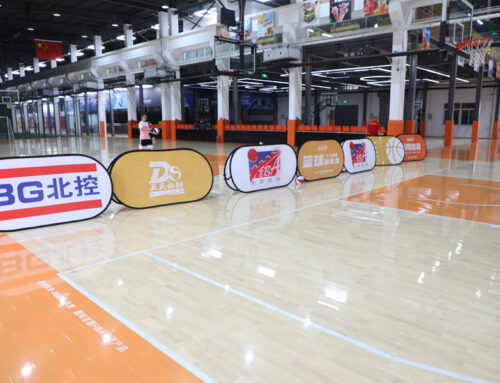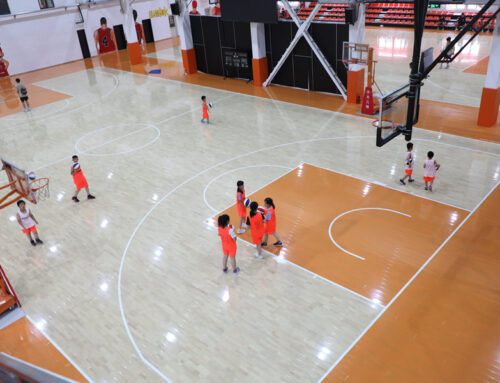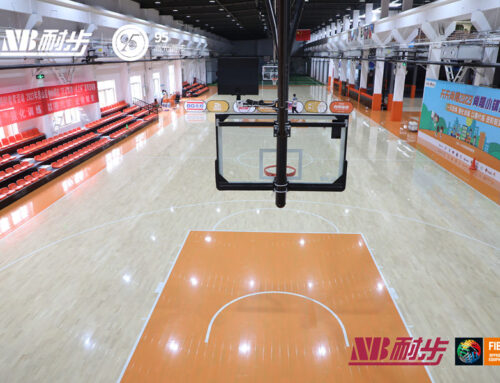Alright folks, today’s project was all about figuring out these cushioned basketball floors, specifically the portable ones with that LVL Larch core everybody keeps mentioning. Needed one because the community center’s old setup was basically concrete with a death wish.

First Step: Research & Head-Scratching
Started online. Searched for “portable basketball floors features” and wow, info overload! Everyone claims their floor is the best, felt lost. Then remembered the buzz about LVL Larch being durable and light. Dug deeper on that, read reviews from actual users, not just sales sites.
Hitting the Showroom Floors (Literally)
Called around, found a distributor with samples. Went down there with a basketball in hand. Told the rep I wasn’t just looking, I needed to test. Seriously, started bouncing that ball hard on every sample plank they had.
- Bounce Test: Some surfaces felt dead, like bouncing on sand. Others were too springy, made the ball weirdly unpredictable. Kept bouncing until I found a couple where it felt familiar – like a good, honest hardwood gym floor bounce.
- Foot Feel: Kicked off my shoes (got some stares) and walked, jogged, tried sliding. Needed something that wasn’t slippery but gave enough “slide” for defensive moves. Stuck on one that felt just right under my socks.
- The Dropped Keys Test: Sounds silly, right? Dropped my keyring from ear-height. On the cheaper looking tiles, it was this loud CLACK. On the better LVL Larch setups, it was a much quieter thud. That told me a lot about how knees might feel landing.
Asking Awkward, Detailed Questions
Grilled the poor sales guy. Needed the nitty-gritty.
- Locking System: How exactly do these tiles clip together? Made him demo it, trying to wiggle the pieces apart. Didn’t want tiles gapping mid-game. Found one system that clicked solidly and stayed put.
- That LVL Larch Core: Asked for a close look. Needed to see the thickness, the grain structure. Saw where it mattered – thicker cross-laminated layers meant less flex and wobble when jumping hard near the seams.
- Surface Scratches & Maintenance: Grabbed my car keys. Carefully gave a hidden spot on the sample a decent scratch. Checked how easy it was to buff out or hide. Resigned myself that dings happen, but got reassurance on fixing minor stuff.
The Big Unboxing & Installation Trial
Ordered a small section to test at home. Box arrived surprisingly manageable – one piece I could lift. That “portable” claim felt real.
- Laydown: Unpacked the tiles. First surprise – no tools needed. The locking mechanism was these clever oversized plastic tabs. Just lined up the tiles and stomped down near the edge. Click. Repeat. Was laying a decent patch in minutes.
- Stability Check: Jumped around like a kid on the edges and corners. Held firm. Ran fast stops. No shifting. Felt stable.
- Sound Test: Had my kid run dribble drills upstairs while I listened downstairs. Noticeably muffled compared to the thundering racket on our basement concrete. Happy neighbors!
Final Verdict & Lessons
After all that poking, prodding, and bouncing, it clicked. Forget just the top padding specs. The real magic combo for a great portable floor is:
- A Seriously Sturdy Core: That LVL Larch? It’s what stops the whole thing feeling bouncy and cheap. Needs thickness and good lamination.
- Surface That Feels Right: Not too slick, not too sticky. Needs to support moves.
- A Lock That Actually Locks: Zero wiggle room between tiles is non-negotiable for safety.
- Manageable Weight: Truly portable means you can move the pieces yourself without a forklift.
So yeah, learned the hard way not to just buy the cheapest tile ad online. Get your hands on samples, test it like you’ll use it, ask the tough questions. That LVL Larch core really does make a difference you can feel. Good luck out there!





